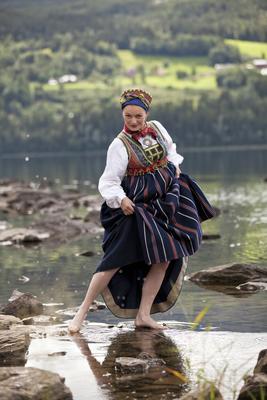Folk costumes are locally distinctive garments which were worn in villages in pre-industrial times and on which bunads as we know them today were based.
Each village had its own customs for wearing folk costumes that distinguished it from those of other villages and from contemporary fashion trends in the towns and cities. They were the result of cultural heritage and the interaction between external influences and local innovation.
These customs differentiated between formal garments and everyday garments, and were carefully governed by established norms for wearing and using them and for which garments were worn on which occasions. The tradition of wearing folk costumes was thus inextricably linked to, and part of, the agrarian society. These norms played a vital and decisive role in the tradition itself, though there was still room for variation: "it was a matter of having something that no one else had."
The major political, economic and social upheavals of the 19th century transformed the highly traditional agrarian society and, as a consequence, the locally distinctive customs for wearing folk costumes. Goods such as factory-woven fabrics, fashion magazines, pattern sheets and sewing machines became more widely available and changed the ways in which people lived and dressed. Living conditions in towns and villages throughout Norway changed, and folk costumes were gradually replaced by more fashionable clothes. The speed at which these changes came about varied in different parts of the country.
In Norway, some of the customs for wearing the old folk costumes were kept alive in the gradual transition to the modern-day bunads. The only other places where customs for wearing folk costumes are kept alive are the Sámi areas of Norway. Several minorities that recently arrived in Norway have also brought their folk costume traditions with them.
